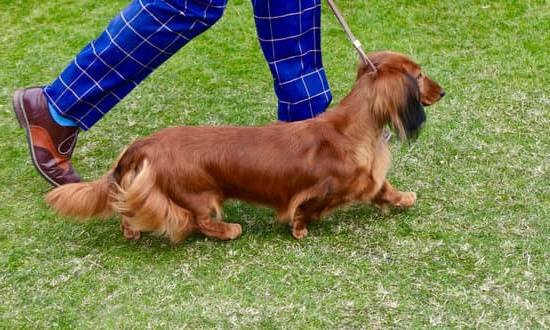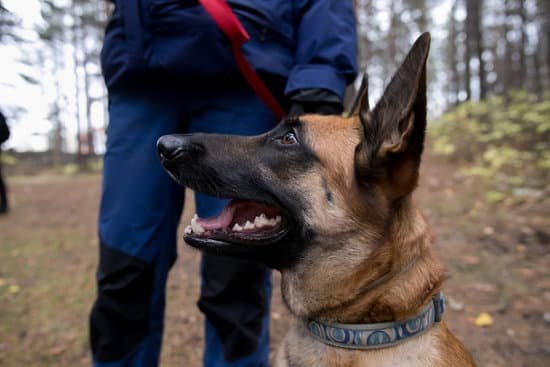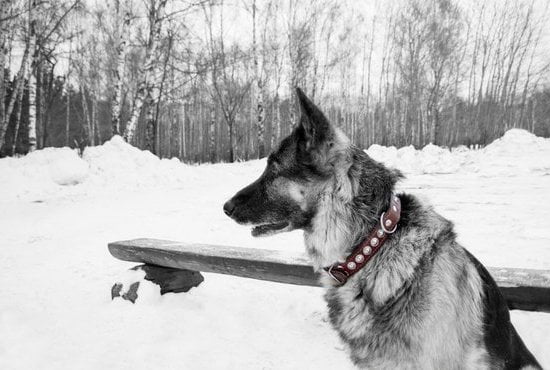Can dogs be trained to use litter trays? Many pet owners wonder if it’s possible to teach their dogs to use a litter tray, and the answer might surprise you. In this article, we will explore the benefits of using litter trays for dogs, the training process, how to choose the right litter tray for your dog, as well as common challenges and tips for successful training.
Using a litter tray for dogs can have several benefits. It allows pet owners who live in apartments or homes without outdoor space to provide a designated bathroom area for their pets. It also allows elderly or disabled dog owners who may have difficulty taking their pets outside regularly. Additionally, it can be helpful during harsh weather conditions when outdoor bathroom breaks are not ideal.
Understanding the training process for litter tray use is essential for success. We will discuss the steps involved in teaching your dog to use a litter tray and how to transition from outdoor to indoor bathroom habits.
We’ll also cover the importance of consistency and patience in the training process, as well as how to address behavioral issues that may arise during training. So, if you’re considering training your dog to use a litter tray, read on to learn more about this possibility.
Understanding the Training Process for Litter Tray Use
Instilling the Idea of Indoor Bathroom Habits
When it comes to training dogs to use litter trays, the first step is to instill the idea of indoor bathroom habits. This involves teaching your dog that it is acceptable to relieve themselves indoors, but only in a designated area. This can be achieved through positive reinforcement every time they use the litter tray, as well as redirecting them if they attempt to relieve themselves in other areas of the house.
Potty Training Techniques for Litter Tray Use
Potty training techniques for litter tray use are similar to those used for outdoor bathroom habits. It’s important to establish a consistent routine and take your dog to the litter tray at regular intervals, especially after meals and naps. Additionally, using verbal cues such as “go potty” or “use the tray” can help them understand what is expected of them.
Managing Accidents During Training
During the training process, accidents are inevitable. It’s important not to scold or punish your dog for accidents, as this can create a negative association with the litter tray. Instead, clean up accidents thoroughly and continue with the training process with patience and understanding. Consistency is key in successfully training dogs to use litter trays, so it’s crucial to remain committed to the process despite setbacks.
Understanding the training process for litter tray use requires patience, consistency, and a deep understanding of your dog’s behavior and needs. By following these guidelines and being mindful of your dog’s progress, you can increase the likelihood of successfully training them to use a litter tray indoors.
Choosing the Right Litter Tray for Your Dog
When it comes to choosing the right litter tray for your dog, there are a few key factors to consider. The first consideration is the size of the litter tray. It should be large enough for your dog to comfortably stand and turn around in. Additionally, consider the depth of the tray – it should be deep enough to hold a sufficient amount of litter without spilling over the edges.
Another important factor when choosing a litter tray is the material. Plastic trays are lightweight and easy to clean, while metal trays may be more durable but can be noisy and uncomfortable for some dogs. Additionally, consider any special features that may make the litter tray more appealing to your dog, such as a hood or flap for privacy.
It’s also important to consider the type of litter you will use in the tray. Some dogs may have preferences for certain textures or scents, so it may take some trial and error to find a litter that your dog responds well to.
Additionally, be sure to choose a non-toxic, pet-safe litter that won’t harm your dog if ingested. By taking these factors into consideration, you can choose a litter tray that will make the training process easier and more effective for both you and your dog.
Common Challenges in Training Dogs to Use Litter Trays
Training a dog to use a litter tray can come with its own set of challenges. It’s important for pet owners to be aware of these challenges so they can be better prepared for the training process. Some common challenges when it comes to training dogs to use litter trays include:
- Preference for going outdoors: Dogs are naturally inclined to do their business outside, so getting them accustomed to using a litter tray indoors can be a challenge.
- Confusion with other indoor surfaces: Dogs may have difficulty distinguishing between the litter tray and other indoor surfaces such as carpets or rugs, leading to accidents.
- Resisting the substrate: Some dogs may not like the feel of the litter material and may resist using the litter tray as a result.
To address these challenges, pet owners need to be patient and understand that litter tray training takes time and consistency. It’s important to set realistic expectations and be prepared for setbacks during the training process. Additionally, using positive reinforcement techniques can help encourage dogs to use the litter tray.
Tips for Successful Litter Tray Training
When it comes to successfully training dogs to use litter trays, there are several tips that pet owners can follow to make the process easier:
- Start early: Begin training your dog to use a litter tray as early as possible, especially if you live in an apartment or don’t have easy access to outdoor potty areas.
- Use positive reinforcement: Reward your dog with treats and praise when they successfully use the litter tray, reinforcing this behavior.
- Be consistent: Stick to a regular schedule for bathroom breaks and consistently guide your dog towards the litter tray after meals or naps.
By being aware of common challenges and implementing these tips, pet owners can increase their chances of successfully training their dogs to use litter trays.
Tips for Successful Litter Tray Training
Training your dog to use a litter tray can be a convenient and effective way to manage their bathroom habits, especially for pet owners who live in apartments or have limited outdoor space. Here are some useful tips for successful litter tray training:
- Start Early: If you have a young puppy, it’s best to start litter tray training as soon as they are brought into your home. Puppies are more receptive to learning new habits at a young age, making the training process easier.
- Choose the Right Location: Place the litter tray in a quiet and easily accessible area of your home. Avoid placing it near your dog’s sleeping and eating areas, as dogs prefer to keep their living spaces separate from their bathroom area.
- Positive Reinforcement: Use treats, praise, and rewards to encourage your dog to use the litter tray. When they successfully use the tray, make sure to show them lots of positive reinforcement to reinforce the behavior.
It’s important to remember that each dog is unique and may respond differently to litter tray training. Some dogs may pick up on the concept quickly, while others may take longer to adjust. By being patient, consistent, and using positive reinforcement techniques, you can increase the likelihood of successfully training your dog to use a litter tray.
How to Transition From Outdoor to Indoor Bathroom Habits
Transitioning from outdoor to indoor bathroom habits can be a challenging process, but with the right approach and consistency, it is possible to successfully train your dog to use a litter tray. This transition may be necessary for various reasons such as living in an apartment without access to outdoor space or during times of extreme weather conditions. It is important to understand the training process and be patient throughout this transition.
Gradual Introduction
When transitioning your dog from outdoor to indoor bathroom habits, it’s important to make the process gradual. Start by introducing the litter tray in an area where your dog normally goes potty outdoors. Bring your dog to the litter tray several times a day, especially after meals and playtime. Encourage them to explore the litter tray and reward them for showing interest or using it.
Positive Reinforcement
Using positive reinforcement techniques such as treats, praise, and affection is crucial during this transition. Whenever your dog uses the litter tray, provide immediate positive reinforcement to reinforce the behavior. Positive associations will help your dog understand that using the litter tray is a desirable behavior.
Eliminating Outdoor Options
As your dog begins to show signs of understanding and using the litter tray consistently, gradually eliminate their access to outdoor potty areas. This will help reinforce the idea that the litter tray is now their designated bathroom spot. Be patient during this phase as accidents may still occur, especially during the initial stages of transitioning from outdoor to indoor bathroom habits.
The Importance of Consistency and Patience in Training
Consistency and patience are crucial elements in successfully training dogs to use litter trays. When beginning the training process, it is important to establish a consistent routine for your dog. This includes feeding, potty breaks, and specific times for using the litter tray. Dogs thrive on routines and are more likely to adapt to new behaviors when they have a structured schedule.
Patience is equally important when training dogs to use litter trays. It is normal for dogs to have accidents during the initial stages of training, and it’s imperative not to scold or punish them. Instead, positive reinforcement should be used when they successfully use the litter tray. This can include verbal praise, treats, or toys as rewards for good behavior.
Another aspect of consistency in training is maintaining a consistent location for the litter tray. Once you have chosen a spot for the tray, it should remain there throughout the training process. Moving the tray around can confuse your dog and hinder their progress in learning how to use it effectively.
| Consistency | Patience |
|---|---|
| Establish a consistent routine for your dog during training. | Avoid scolding or punishing the dog for accidents. |
| Maintain a consistent location for the litter tray. | Use positive reinforcement such as verbal praise and treats. |
Addressing Behavioral Issues During Litter Tray Training
Training a dog to use a litter tray can be a challenging task, especially when behavioral issues come into play. One common behavioral issue is the dog’s reluctance to use the litter tray due to unfamiliarity or fear. This can often be addressed by gradually introducing the litter tray to the dog and using positive reinforcement techniques such as treats and praise when the dog successfully uses the tray.
Another common behavioral issue is marking territory, which can lead to dogs urinating or defecating in inappropriate places. One way to address this behavior is by cleaning any soiled areas thoroughly with an enzymatic cleaner to remove the scent of previous accidents, as dogs are more likely to return to these spots. Additionally, providing plenty of exercise, mental stimulation, and opportunities for outdoor bathroom breaks can help reduce territorial marking behaviors.
It’s important for dog owners to recognize that each dog is unique, and some may require more time and patience during the litter tray training process. Consistency in training methods and routines, as well as understanding the individual needs of your dog, are key factors in addressing behavioral issues during litter tray training.
| Behavioral Issues | Addressing Techniques |
|---|---|
| Reluctance to use the litter tray | Gradually introduce the litter tray and use positive reinforcement techniques such as treats and praise |
| Marking territory | Clean soiled areas thoroughly with an enzymatic cleaner, provide exercise and mental stimulation, and offer opportunities for outdoor bathroom breaks |
Conclusion
In conclusion, while it may be a challenging process, training dogs to use litter trays is indeed possible. It requires understanding the benefits of using litter trays for dogs and being patient and consistent throughout the training process. By choosing the right litter tray for your dog and implementing successful training tips, such as positive reinforcement, it is feasible to transition from outdoor to indoor bathroom habits.
It is important to address common challenges that may arise during the training process, such as behavioral issues or reluctance from the dog. Being aware of these challenges and having a plan to overcome them will contribute to the success of litter tray training. Additionally, maintaining consistency and patience, as well as understanding the importance of addressing any behavioral issues that may arise during training, are key components of successfully training dogs to use litter trays.
While not all dogs may be immediately receptive to using litter trays, with dedication and perseverance, it is possible to achieve success in this aspect of their care. Understanding the process, addressing challenges, and remaining patient and consistent will ultimately lead to a successful transition from outdoor to indoor bathroom habits for your canine companion.
Frequently Asked Questions
Why Don’t We Train Dogs to Use Litter Boxes?
Dogs are not typically trained to use litter boxes because their natural instinct is to eliminate waste outside. Unlike cats, who have a strong inclination to bury their waste, dogs prefer to mark their territory and be able to move freely while eliminating.
While some small breeds of dogs can be trained to use pee pads indoors, the concept of a litter box is not as easily transferable to them as it is for cats.
Which Pets Can Be Litter Box Trained?
Cats are the most common pets that can be litter box trained. Their natural instinct to bury their waste makes them ideal candidates for using a litter box.
Additionally, some small mammals like rabbits and ferrets can also be litter box trained due to their similar instincts. However, larger animals like dogs typically do not take easily to this type of training.
Can an Older Dog Be Trained to Use a Litter Box?
It is possible for an older dog to be trained to use a litter box, but it may require more patience and consistency compared to training a puppy. Older dogs may have established habits and preferences when it comes to eliminating waste, so transitioning them to use a litter box will take time and effort.
Positive reinforcement and consistent training methods can help an older dog successfully adapt to using a litter box if necessary.

Welcome to the blog! I am a professional dog trainer and have been working with dogs for many years. In this blog, I will be discussing various topics related to dog training, including tips, tricks, and advice. I hope you find this information helpful and informative. Thanks for reading!





